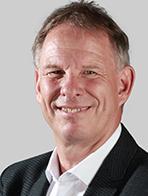Pollution Reduction and Verification
The aim of this module in the Resources and Pollutants Research Area (ReP) is to understand and quantify the origin and release of anthropogenic pollutants and noise into the atmosphere by determining their temporal and spatial variability. Knowledge of sources, pollutant flows, transport and transformation is essential for impact assessment, early detection of potential damage and for the assessment of environmental protection measures. This knowledge is thus the key to pollution reduction.
Achieving established national and international protection goals requires drastic measures to reduce air pollutants (20-50%, Swiss legislation) and greenhouse gases (50% by 2050, Paris Convention). The foundation for these measures is highly resolved temporal and spatial information on the concentrations and emissions of pollutants. For this purpose, we operate the Swiss National Air Pollution Monitoring Network (NABEL) together with the Federal Office for the Environment. We also develop high-precision laser spectrometry, networks of low-cost sensors, and detectors that are deployed by UAVs. Furthermore, we collaborate with ESA to define specifications and to develop retrieval algorithms in the field of geostationary satellites and High-Altitude Platform Systems (HAPS). With our data and knowledge, we contribute to international research infrastructures and supports worldwide mitigation protocols.
Modelling of the NO2 concentration in the city of Lausanne
Noise pollution generates enormous external costs (CHF 2.7 billion from Swiss traffic noise). We design models for noise generation and propagation and develop solutions for noise reduction, such as vibration-isolated railroad sleepers, low-noise flight procedures, or noise-reducing lightweight construction materials. Together with industry and public authorities, we thus enable the reduction of pollution and the increase of acoustic comfort.
Our measurement and model results are publicly available. We develop and use data-driven methods (deep learning, random forest classification, neural networks) in cooperation with partners of the ETH Domain and the Swiss Data Science Center (SDSC).
sonAIR - Noise level on the ground during the launch of an Airbus A330 at Zurich Airport


-
Share
